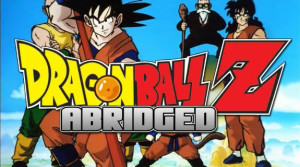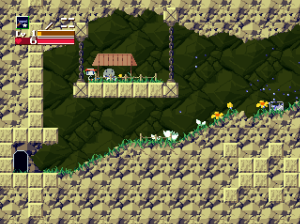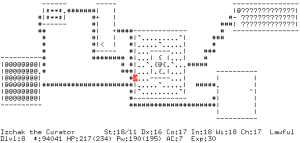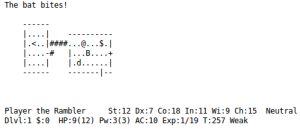Click here if you just want to watch the thing and don’t feel like reading.
 If you’ve never watched Dragon Ball Z, that may be for the best. A little background: Dragon Ball was a cute show about an odd little boy with a monkey tail and a gift for martial arts. He goes on an adventure to seek out the magical dragon balls, which will grant a wish when all are gathered together, and along the way meets and befriends a comical cast of interesting characters. It’s a story loosely based on a classic Chinese novel, Journey to the West.
If you’ve never watched Dragon Ball Z, that may be for the best. A little background: Dragon Ball was a cute show about an odd little boy with a monkey tail and a gift for martial arts. He goes on an adventure to seek out the magical dragon balls, which will grant a wish when all are gathered together, and along the way meets and befriends a comical cast of interesting characters. It’s a story loosely based on a classic Chinese novel, Journey to the West.
Dragon Ball Z is the successor to that show, and where it all goes weird. It turns out that the odd little boy is actually a space alien from a brutal race of space mercenaries, and he was sent to earth to exterminate all life. We discover this when his adult brother lands on earth to do just that and the odd little boy, now an odd grown man, must kill him in defense of the planet. And… also the next alien who comes along and wants to do the same thing. And the next one. And the next one. Naturally each villain has their own plot device, but the show is mostly about fighting. Lots and lots of fighting. So very much fighting. It’s infamous for that and a few other oddities, but above all for dragg i n g t h i n g s o u t. . .
Each fight with a main villain lasts for multiple episodes and the more the character gets built up the longer this takes. One particular villain gets a whole season’s worth of hype and bringing him down takes the entire season after that, with just the final fight between villain and protagonist stretching on for, I am not exaggerating here, fully nineteen half-hour episodes. That is not including all the episodes that the villain spends fighting the show’s minor characters before the protagonist arrives.
That said, Dragon Ball Z does have its moments. It can be funny at times, usually in the very brief periods between fights, and the fights themselves are kind of neat in concept if not in execution. The conceit is martial artists who are so very good at martial arts that they gain super powers, eventually learning to shoot fireballs and then learning to fly, and as the series goes on this snowballs exponentially. TV tropes calls this process plot leveling (or sequel escalation, or serial escalation), but I’ve always referred to it as the Dragon Ball Z Effect: late in the series the characters have grown so powerful that they need to make a gentleman’s agreement not to destroy the planet that they’re standing on over the course of their fight, something that they can do with casual ease. From a storytelling perspective this is awful and silly, but if you have an appreciation for just throwing the storytelling rules out the window in an effort to make something as ridiculous and over-the-top as possible then this can be kinda fun. For a while. For a little while.
We come back to that problem of dragging things out… You might enjoy something like this in principle, but chances are good that even if you like the concept you are not a time lord and willing to sit through hour after endless hour of dreary repetitive fight scenes. Well now you don’t have to: a group of fans got together and started re-cutting and re-dubbing the original episodes, removing an awful lot of cruft and adding a lot of their own humor. Dragon Ball Z Abridged (Youtube link) is not just a vastly improved version of the original series, but is great all on its own. The shell of the same story remains, they hit all the high points of the plot, but the characters have been satirized for comic effect and what used to drag on interminably is now reasonably paced. The aforementioned fight which lasted for nineteen half-hour episodes now takes only three, each about ten minutes long.
The abridged series is less serious than the original, clearly preferring comedy to drama, but to be perfectly frank the original had emotional impact more-or-less on par with professional wrestling: they needed excuses to fight, and that’s about it. The abridged characters are probably better described as caricatures but in that respect they have more character, and this gives the few tense moments a little more weight. Not a lot, it’s still a comedy.
At any rate, fans and others who have watched the original show certainly have the most to gain from the abridged version, but it does tell a complete story and so should be accessible to anyone. If you’ve never heard of Dragon Ball Z before now, this is still the version which I would recommend.
 By this point Cave Story isn’t exactly obscure. It’s the game that everyone points to when they talk about how great indie games can be, and they’re not wrong. I can’t offer any new enthusiasm for this title, but I’m going to post it here for the sake of completeness. Maybe there’s someone out there somewhere who never pays any attention to anything, but is for some reason one of the two people who comes to this site. It’s possible. If you are that person, you should play Cave Story.
By this point Cave Story isn’t exactly obscure. It’s the game that everyone points to when they talk about how great indie games can be, and they’re not wrong. I can’t offer any new enthusiasm for this title, but I’m going to post it here for the sake of completeness. Maybe there’s someone out there somewhere who never pays any attention to anything, but is for some reason one of the two people who comes to this site. It’s possible. If you are that person, you should play Cave Story.




